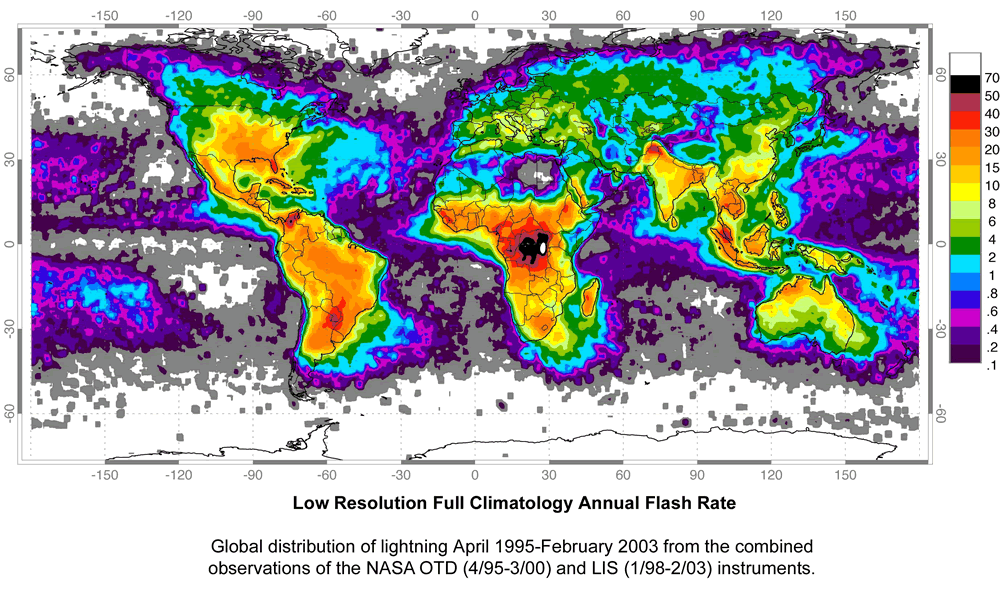
Wednesday, February 29, 2012
Fuel + Oxygen = Fire
The first ingredient in fire is fuel, and fuels accumulate in natural ecosystems at different rates, depending on NPP and decay rate:
 Example ecosystem litter production, decay rate ("k"), and resulting steady state.
Example ecosystem litter production, decay rate ("k"), and resulting steady state. Graph showing the effect of different litter production and decay rates yielding different fuel loadings.
Graph showing the effect of different litter production and decay rates yielding different fuel loadings.Fuels need oxygen to burn, and available oxygen is primarily determined by the structure of fuels. Litter can be classified by how long it takes to dry: a 100 h size class of litter takes 100 hours to dry (and so is much larger than a 1 h size class). These larger fuels have lower surface area to volume ratios and do not burn as hot as smaller fuels with more surface area. However, the overall structural arrangement ("fuel bed depth") of fuels may be most important in determining fire intensity:
 Note that there must also be a source of ignition.
Note that there must also be a source of ignition. Map from Geology.com. Scale bar is number of lightening flashes per square kilometer per year. Most areas of the globe have ample ignition sources.
Map from Geology.com. Scale bar is number of lightening flashes per square kilometer per year. Most areas of the globe have ample ignition sources. Fire return interval can be visualized in a semi-variogram:

There are places to hide from fast, wind-driven wild fires:

Unless otherwise cited, all data from Fire and Plants by William Bond and Brian van Wilgen, 1996.
Sunday, February 26, 2012
Grazing Optimization
McNaughton SJ. Grazing as an Optimization Process: Grass-Ungulate Relationships in the Serengeti. The American Naturalist. 1979 May 1;113(5):691–703.
McNaughton lists 9 possible mechanisms by which productivity of herbivore affected plant tissues may be compensated or stimulated:
1. Increased photosynthetic rates in residual tissue;
2. Reallocation of substrates from elsewhere in the plant;
3. Mechanical removal of older tissues functioning at less than a maximum
photosynthetic level;
4. Consequent increased light intensities upon potentially more active underlying
tissues;
5. Reduction of the rate of leaf senescence, thus prolonging the active photosynthetic period of residual tissue;
6. Hormonal redistributions promoting cell division and elongation and activation of remaining meristems, thus resulting in more rapid leaf growth and promotion
of tillering;
7. Enhanced conservation of soil moisture by reduction of the transpiration
surface and reduction of mesophyll resistance relative to stomatal resistance;
8. Nutrient recycling from dung and urine;
9. Direct effects from growth promoting substrates in ruminant saliva
Theoretical work by Claire Mazancourt (1998 and 1999):
But how much difference can herbivory make when ecosystem ecologists so routinely ignore it when calculating NPP?
Relationship between average aboveground annual NPP and average annual precipitation for 100 ecological regions within the central grassland region of the USA . Sala,O. E., Parton, W. J., Joyce, L. A. and Lauenroth, W. K. (1988b) Primary production of the central grassland region of the United States. Ecology 69, 40-45. More info, including soil carbon relationships.
One possibility is that there isn't much wiggle-room, and even that is dependent on nutrient concentrations:
Cebrian J, Williams M, McClelland J, Valiela I. The dependence of heterotrophic consumption and C accumulation on autotrophic nutrient content in ecosystems. Ecology Letters. 1998;1(3):165–170.
Subscribe to:
Posts (Atom)